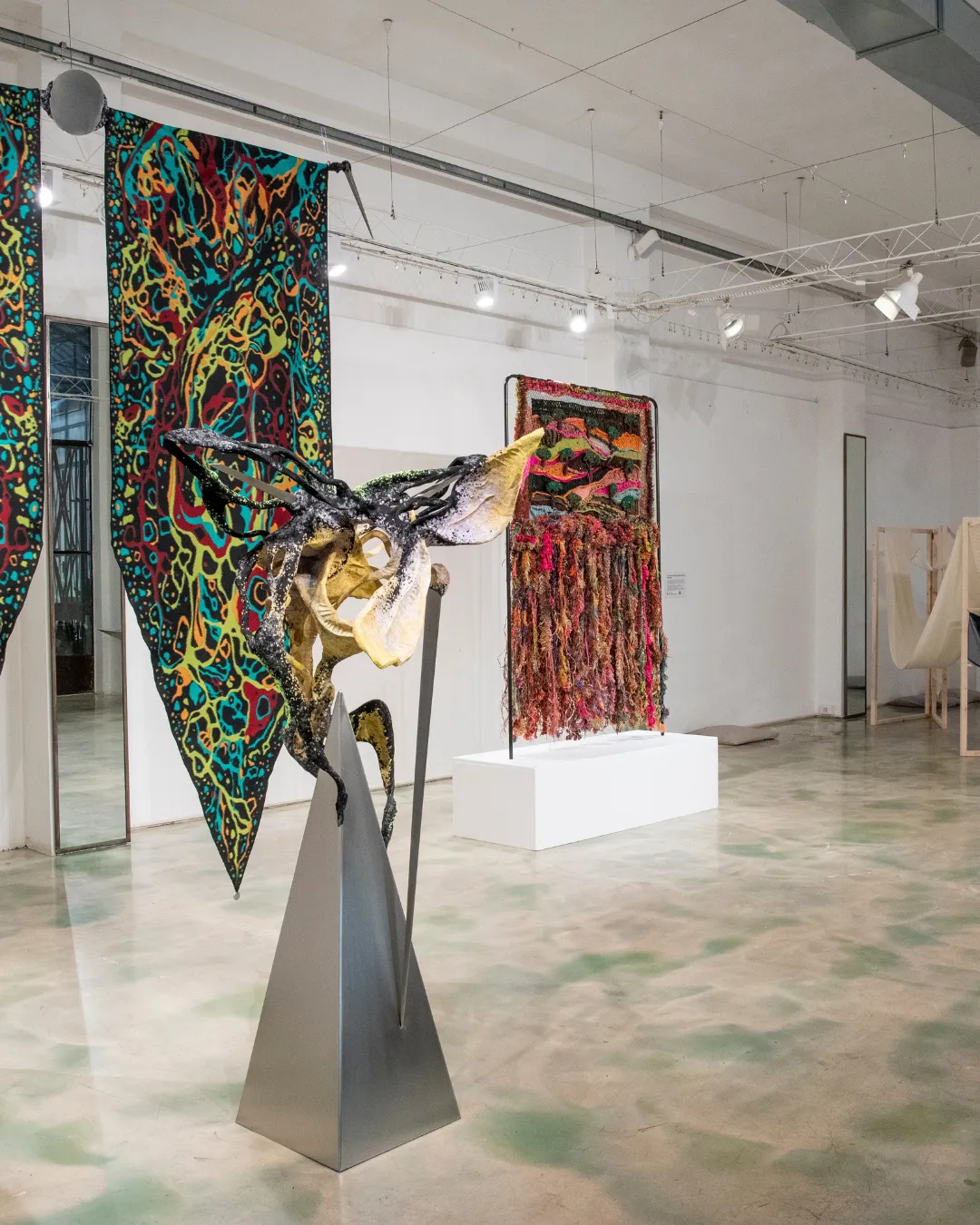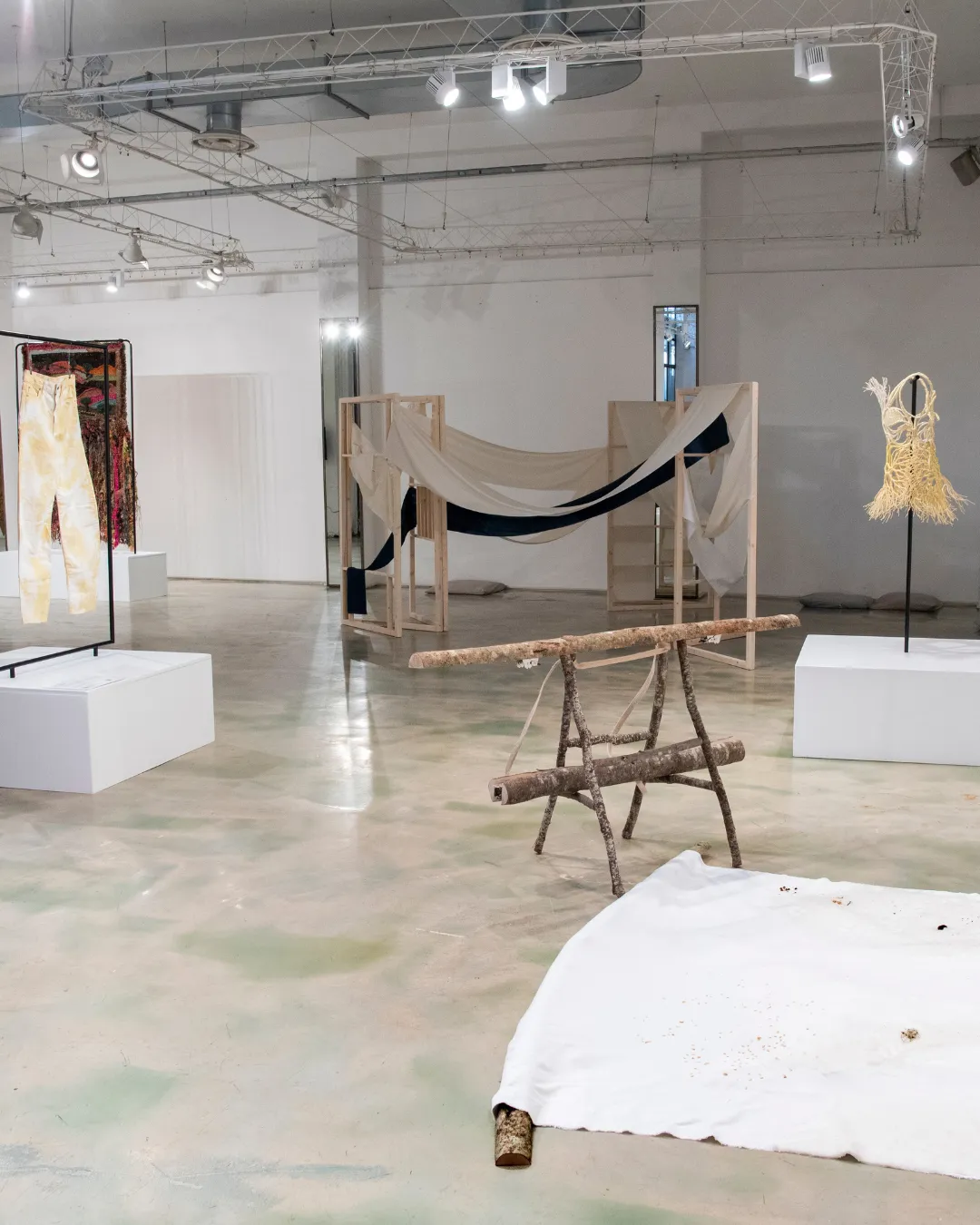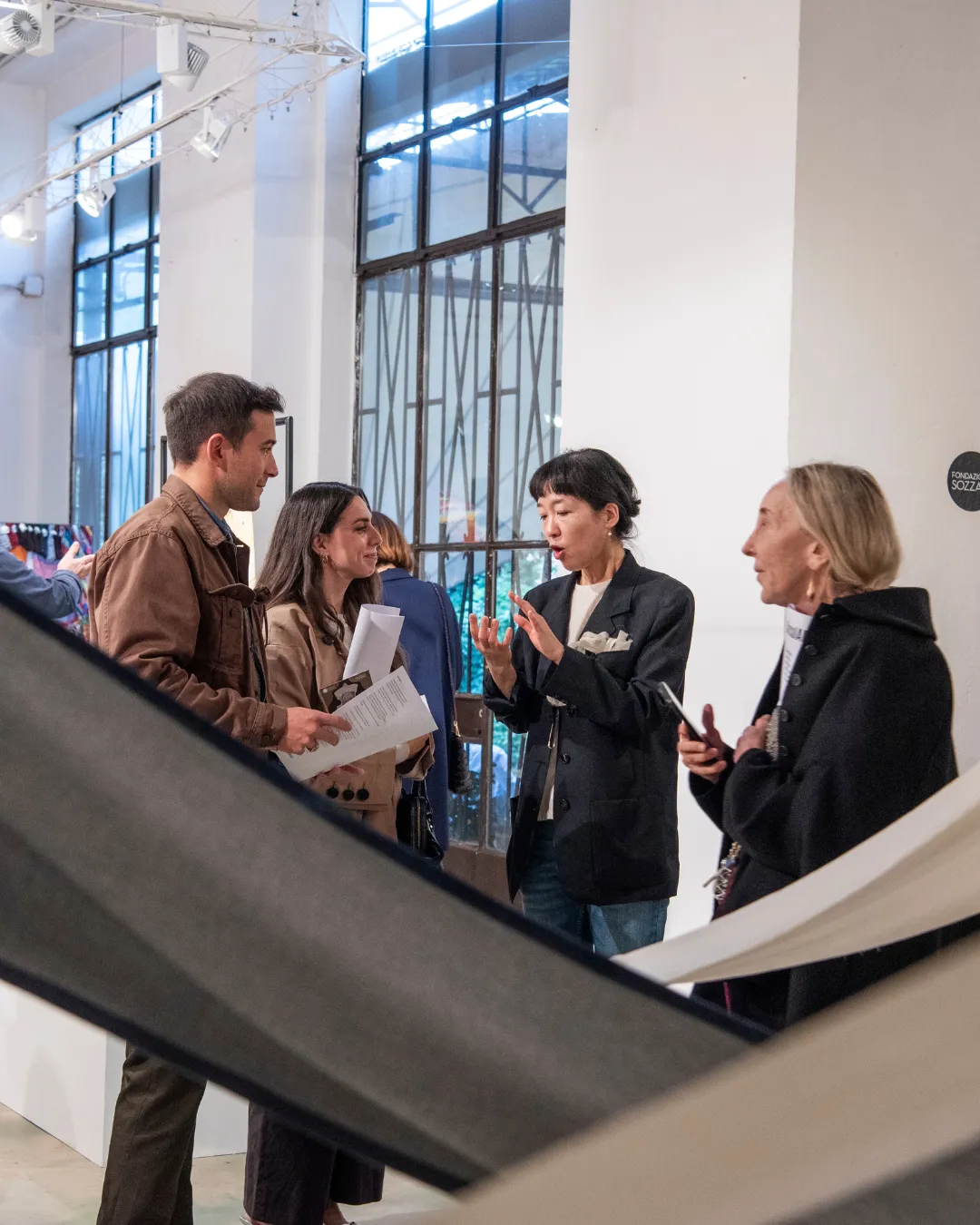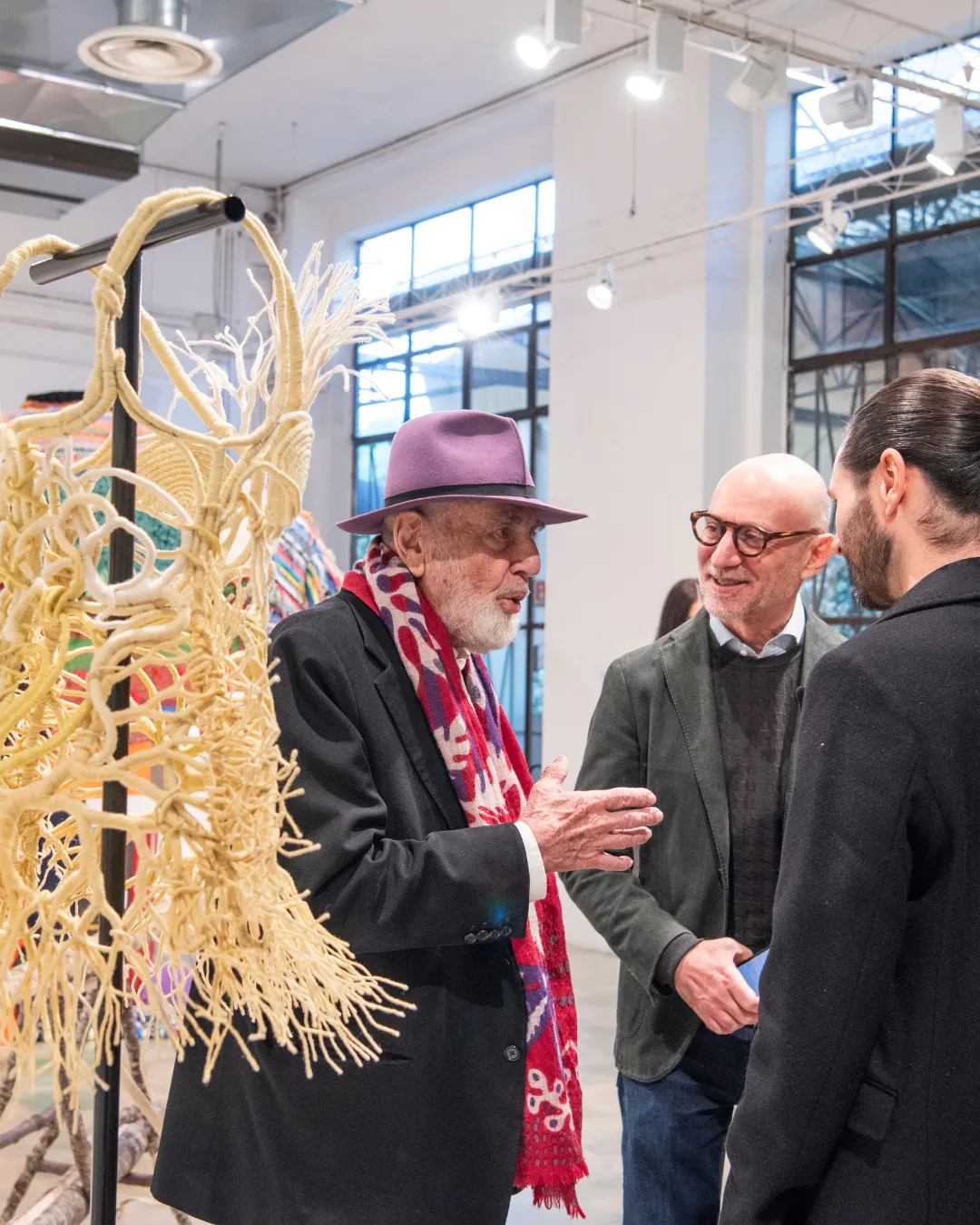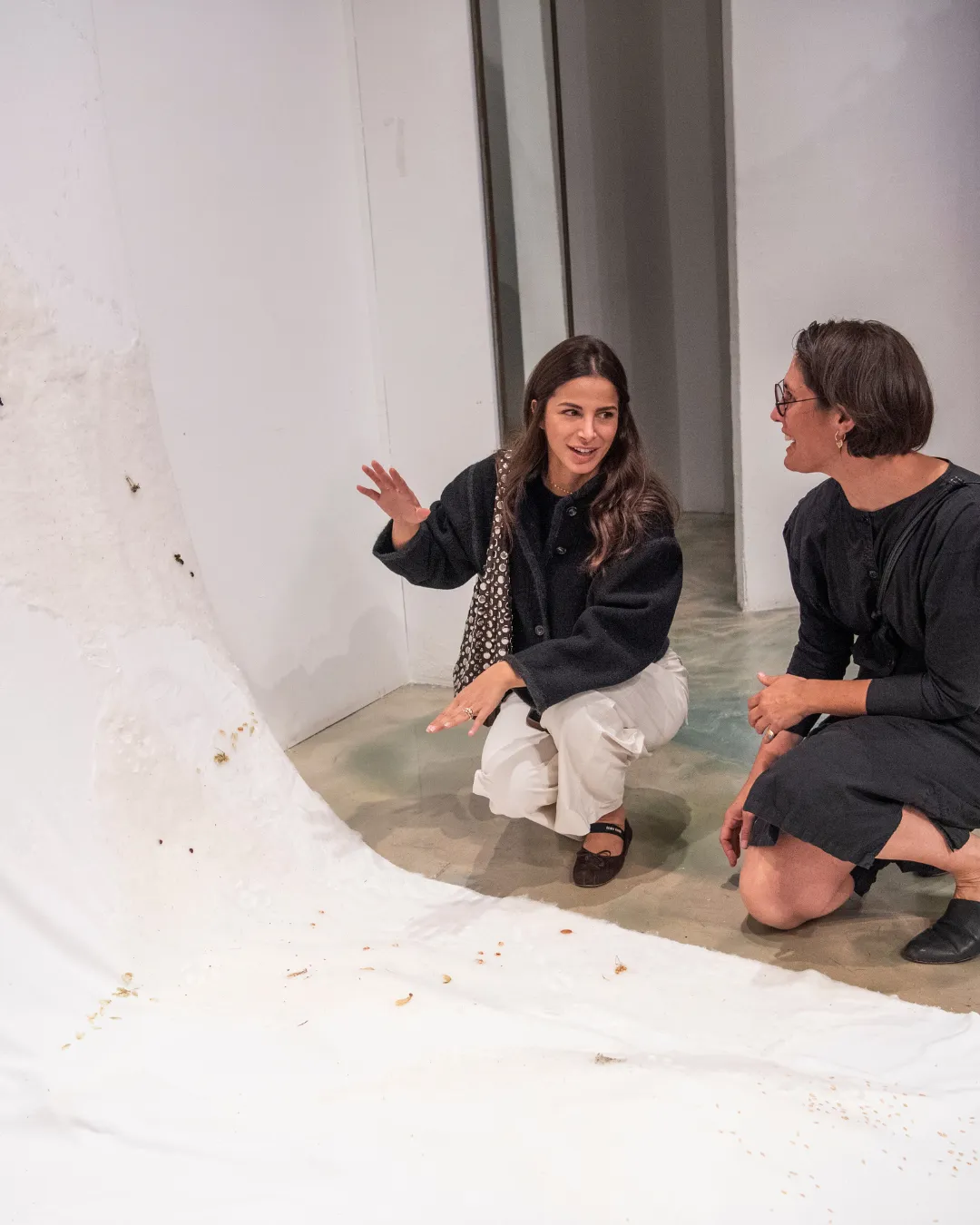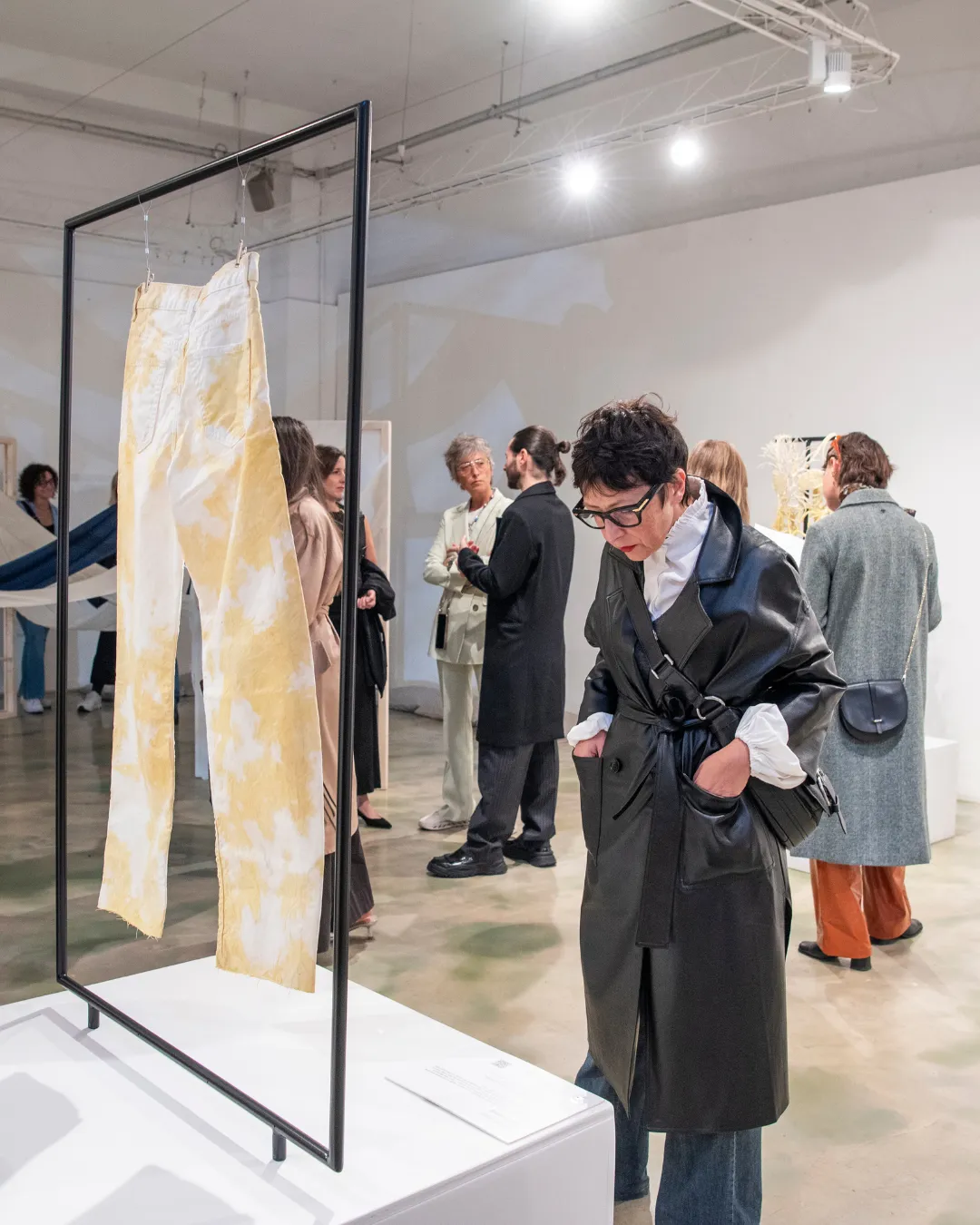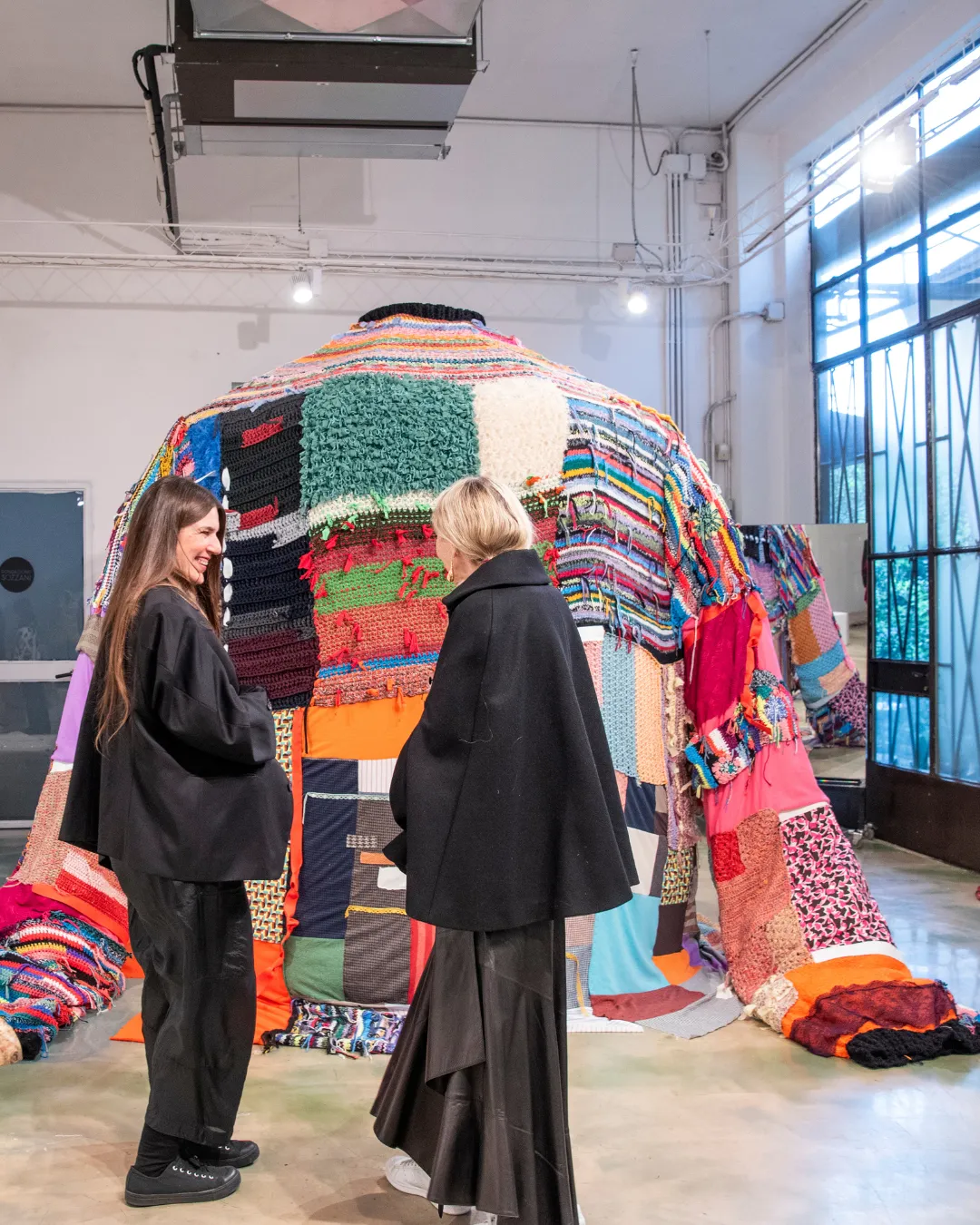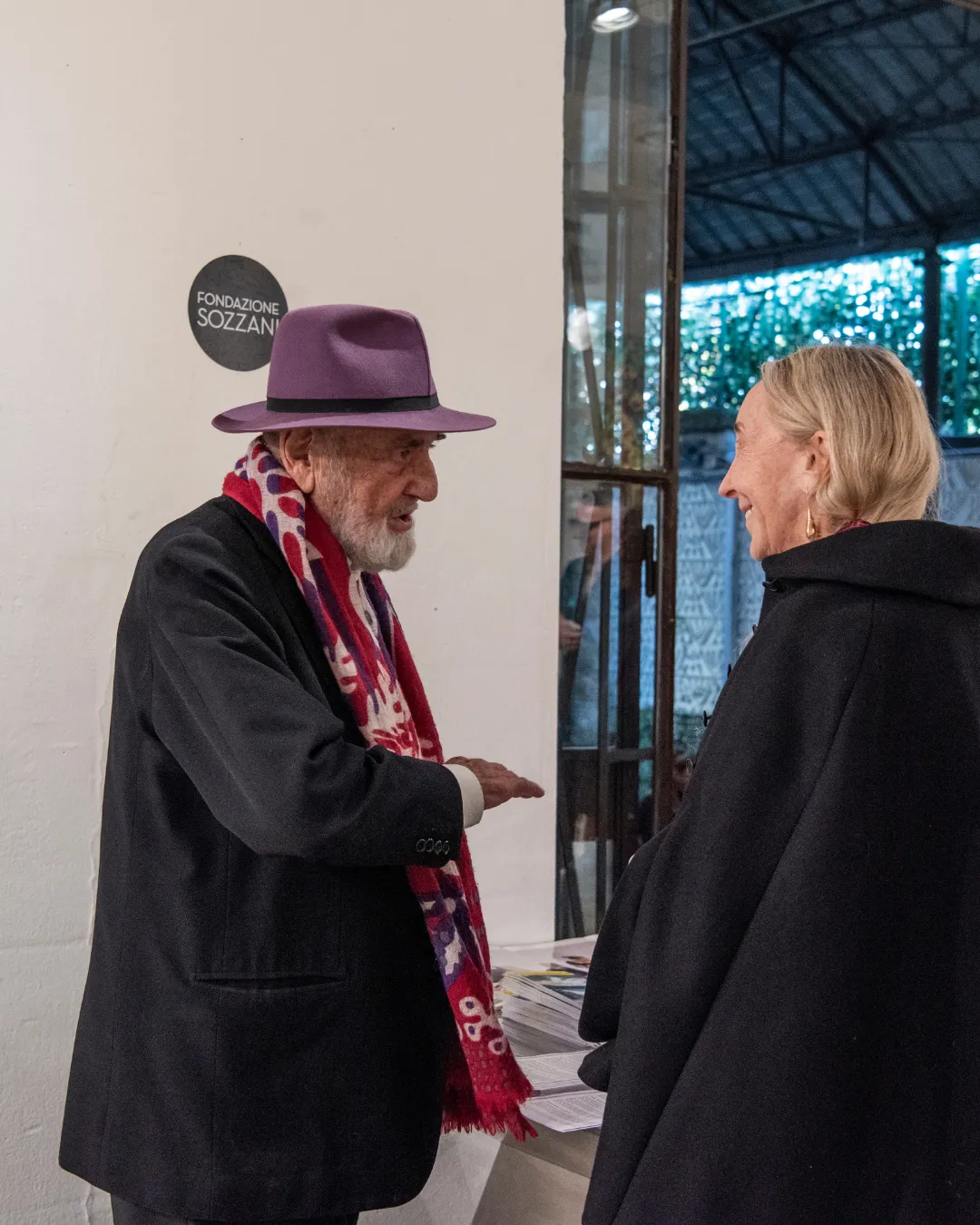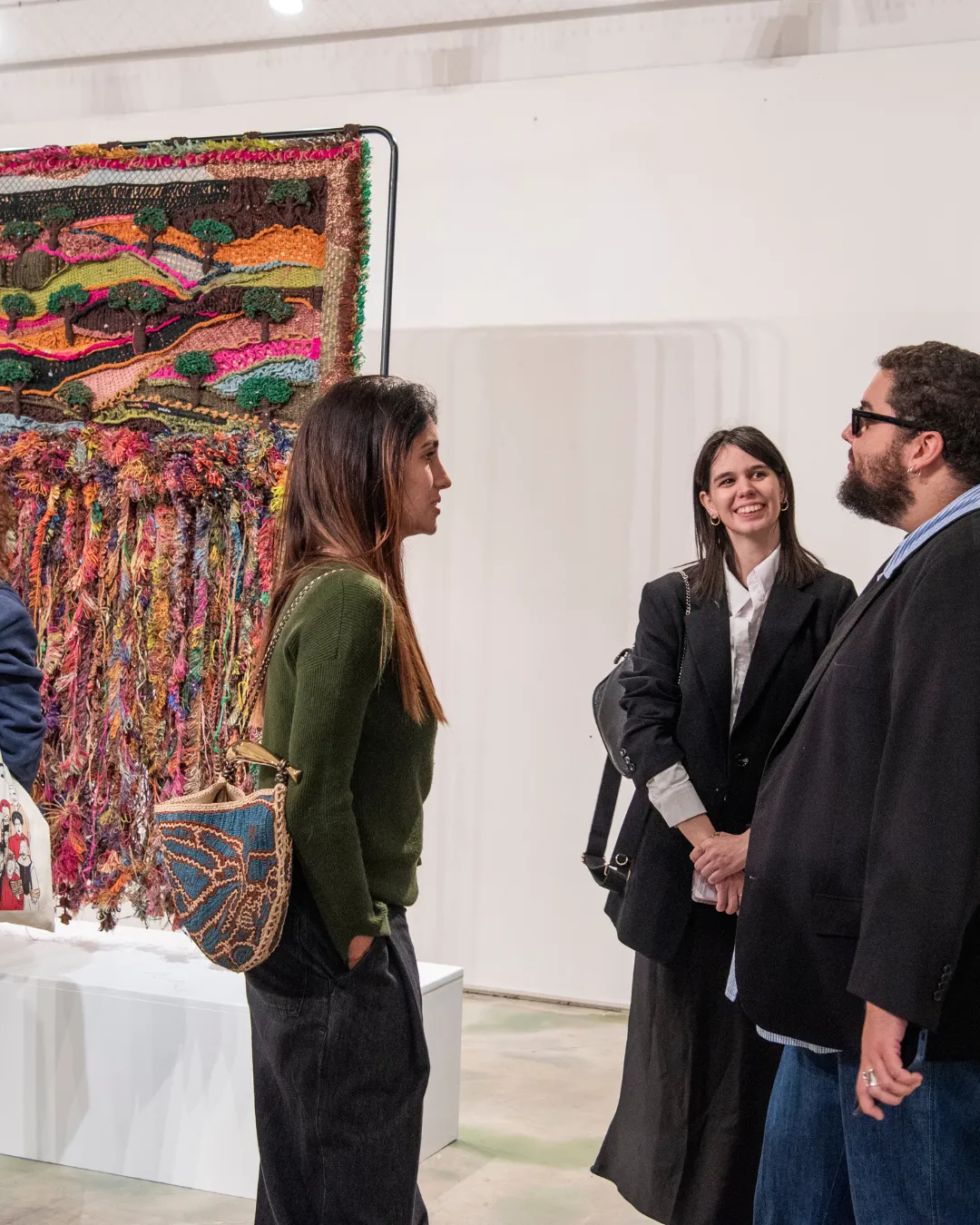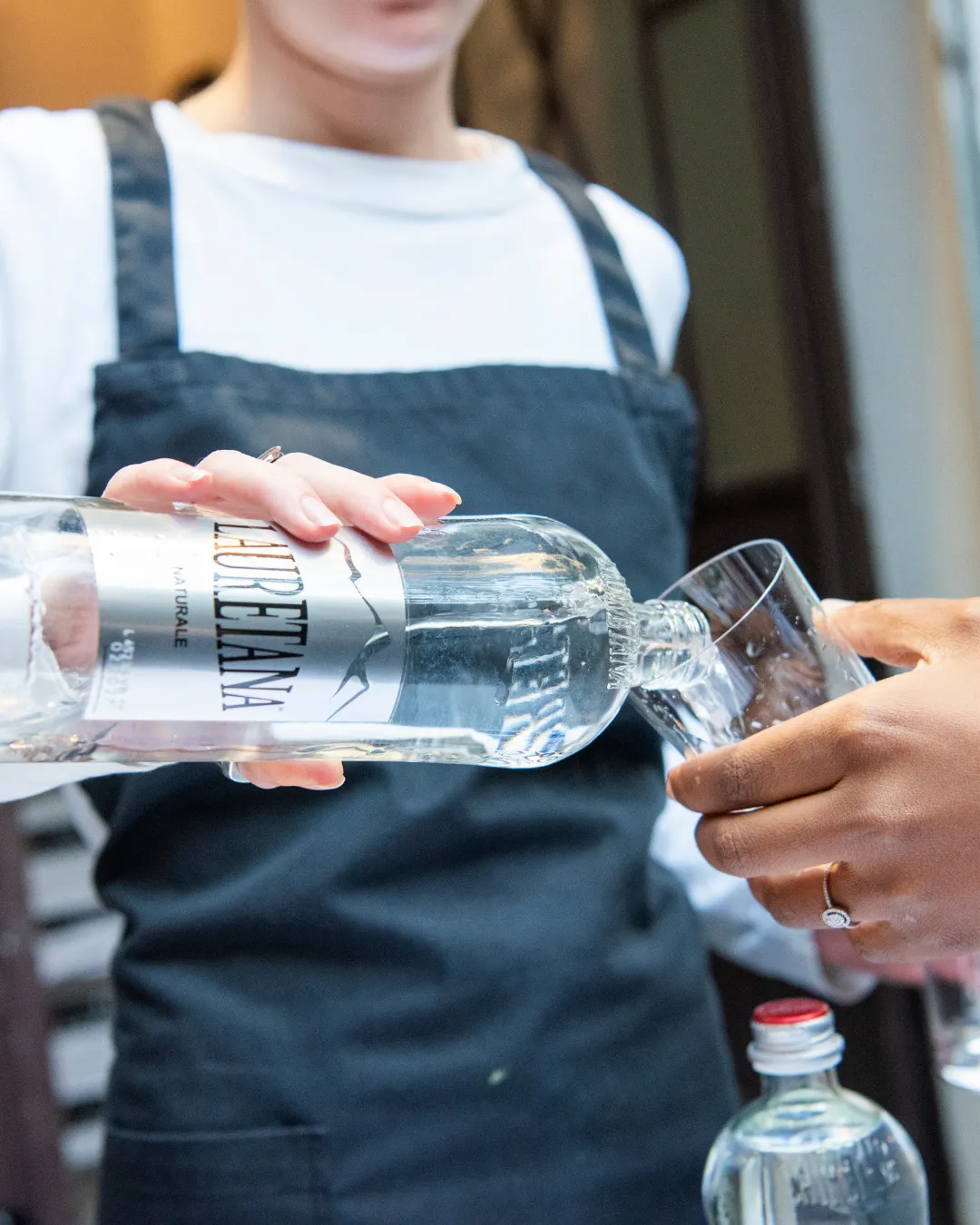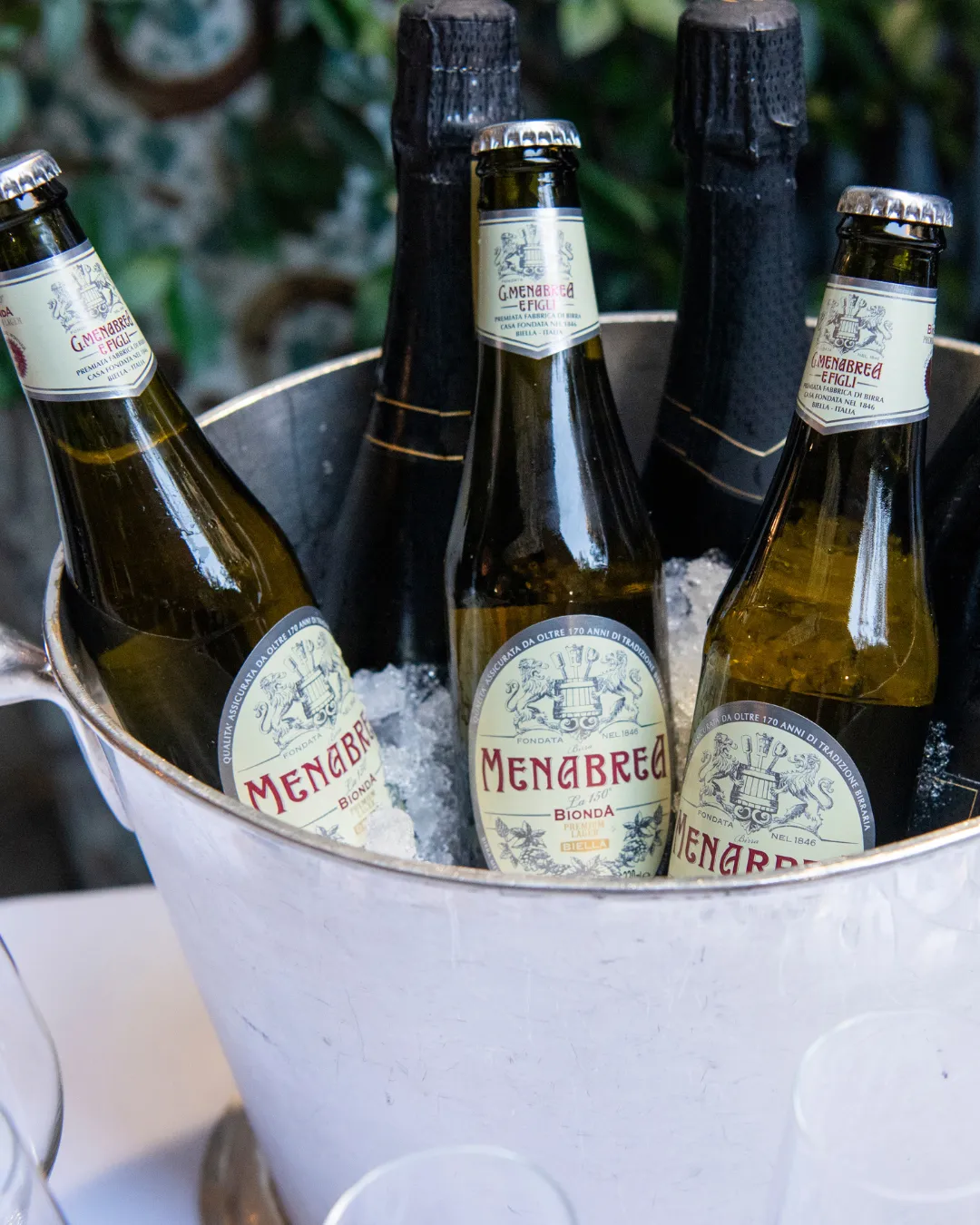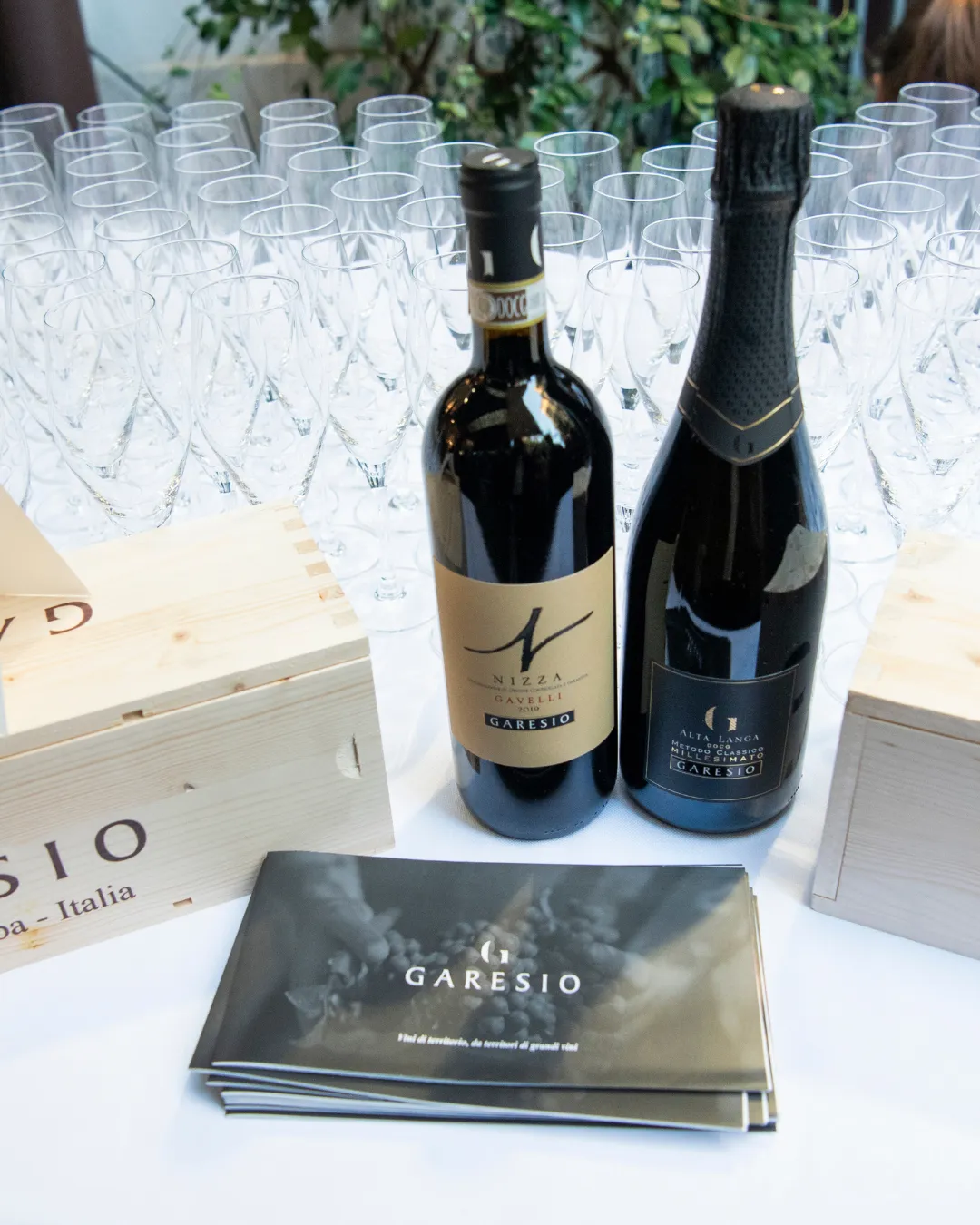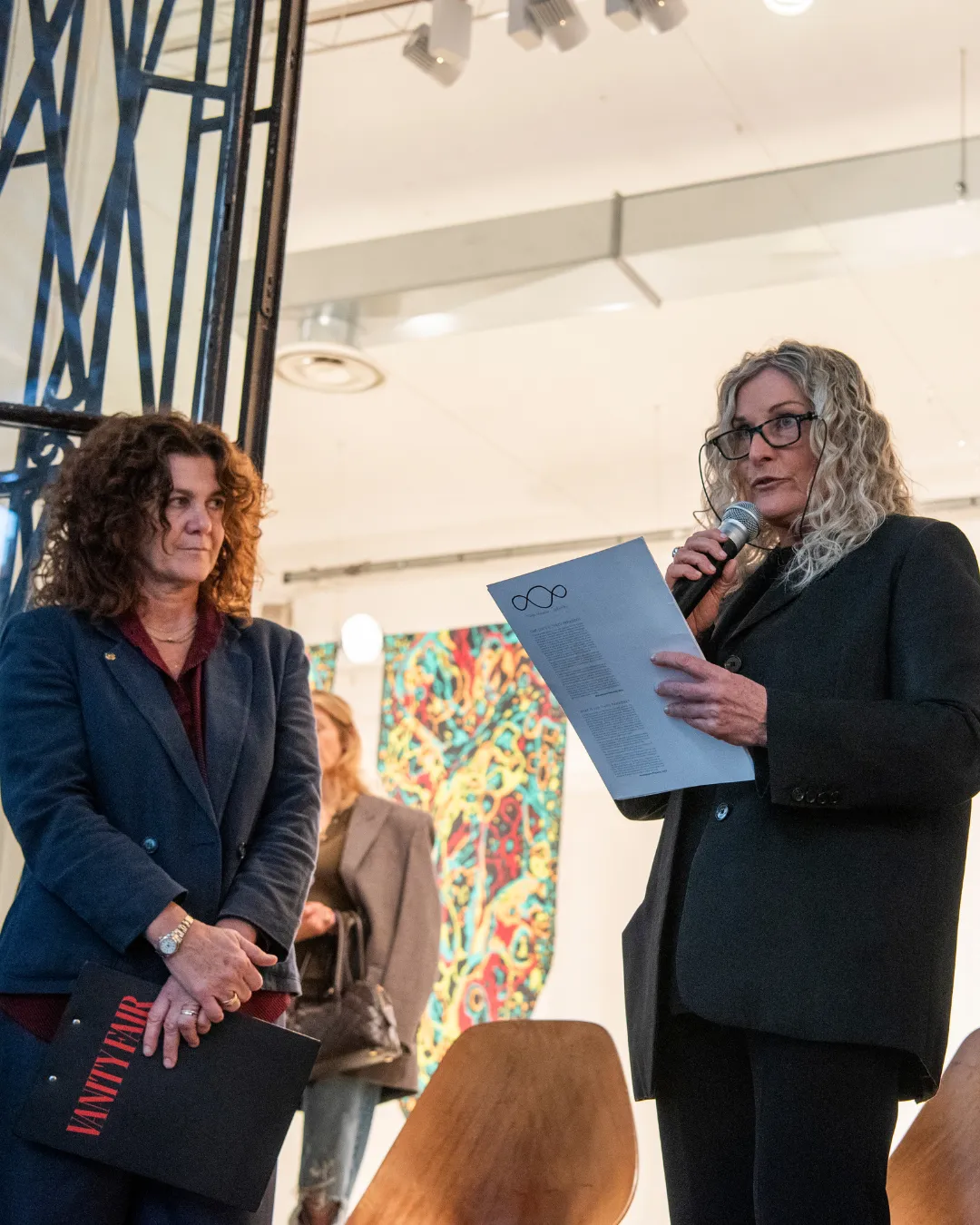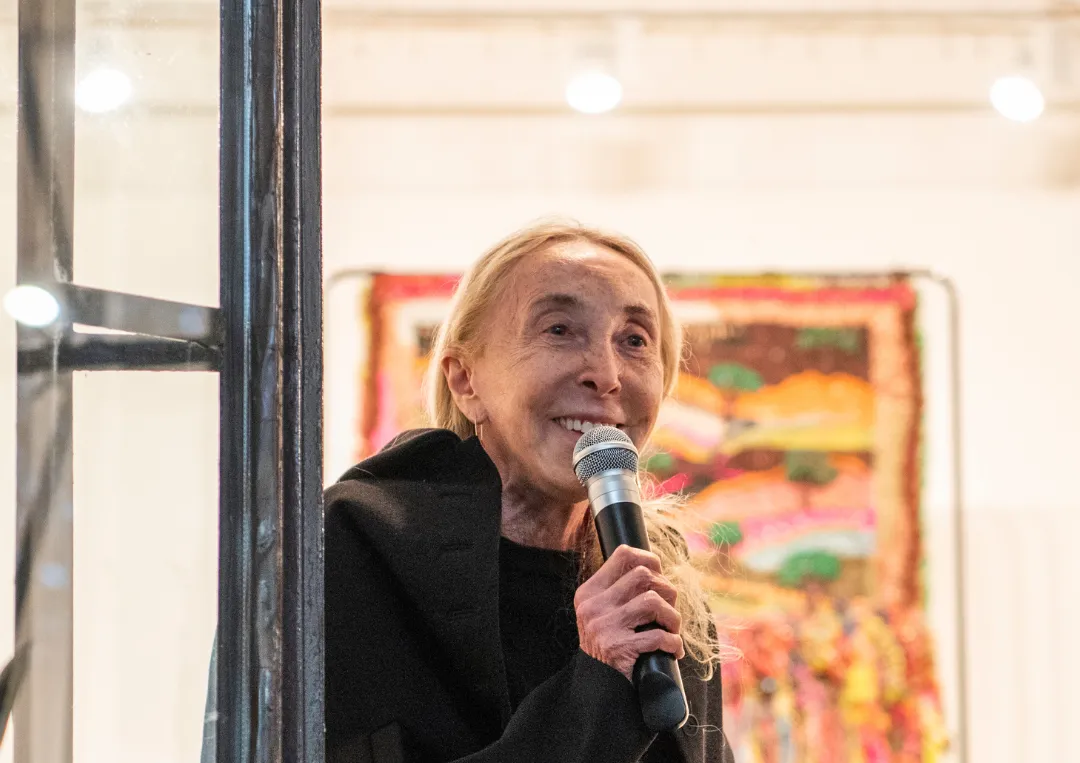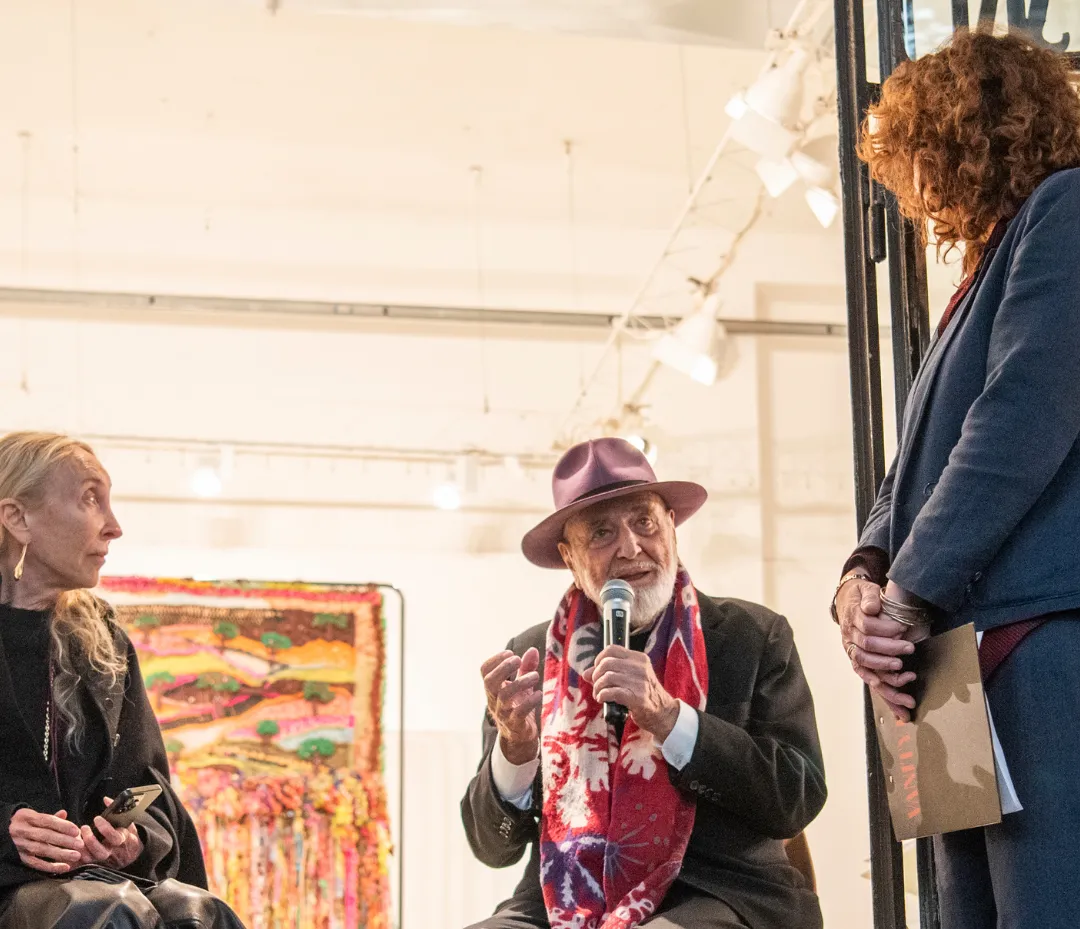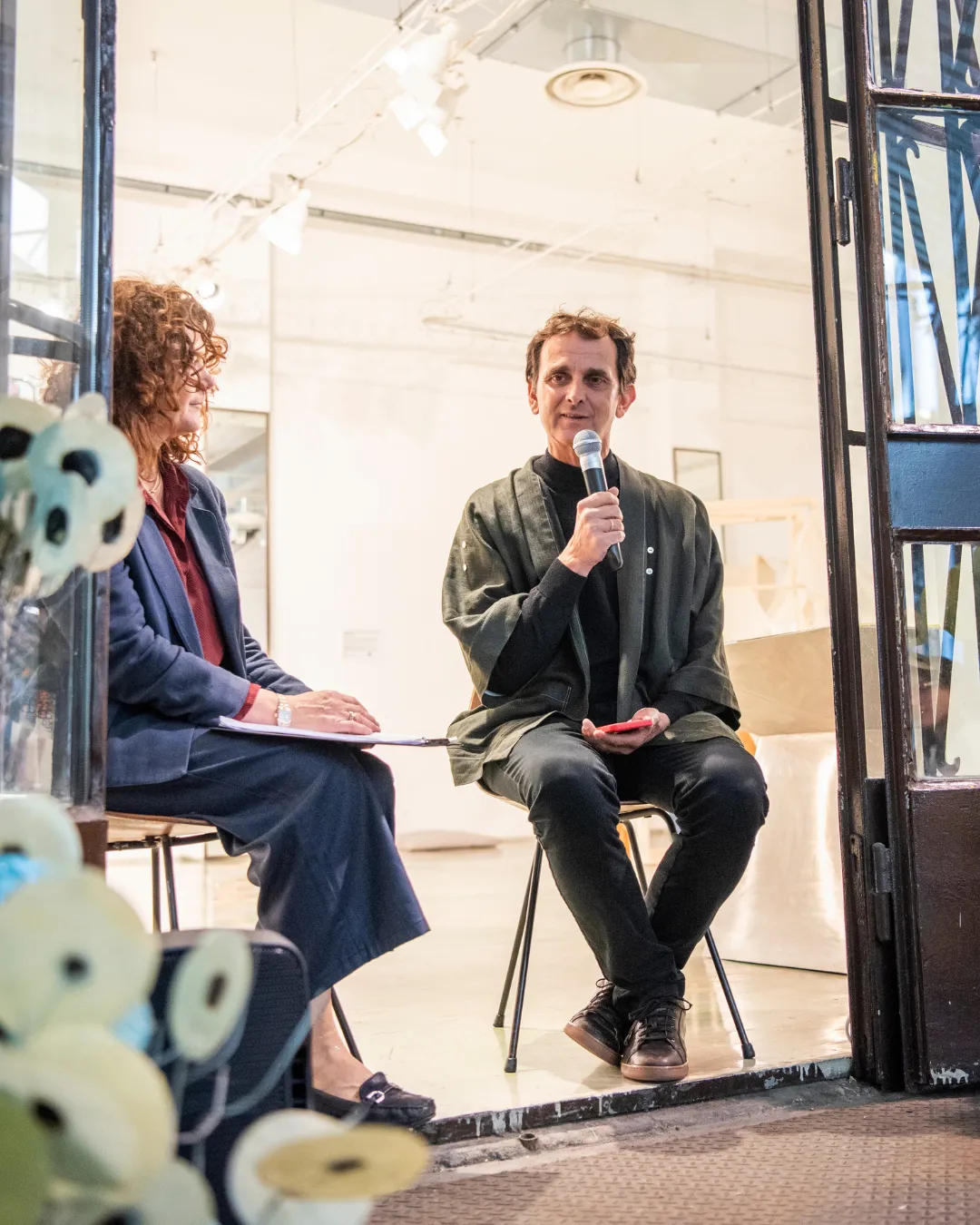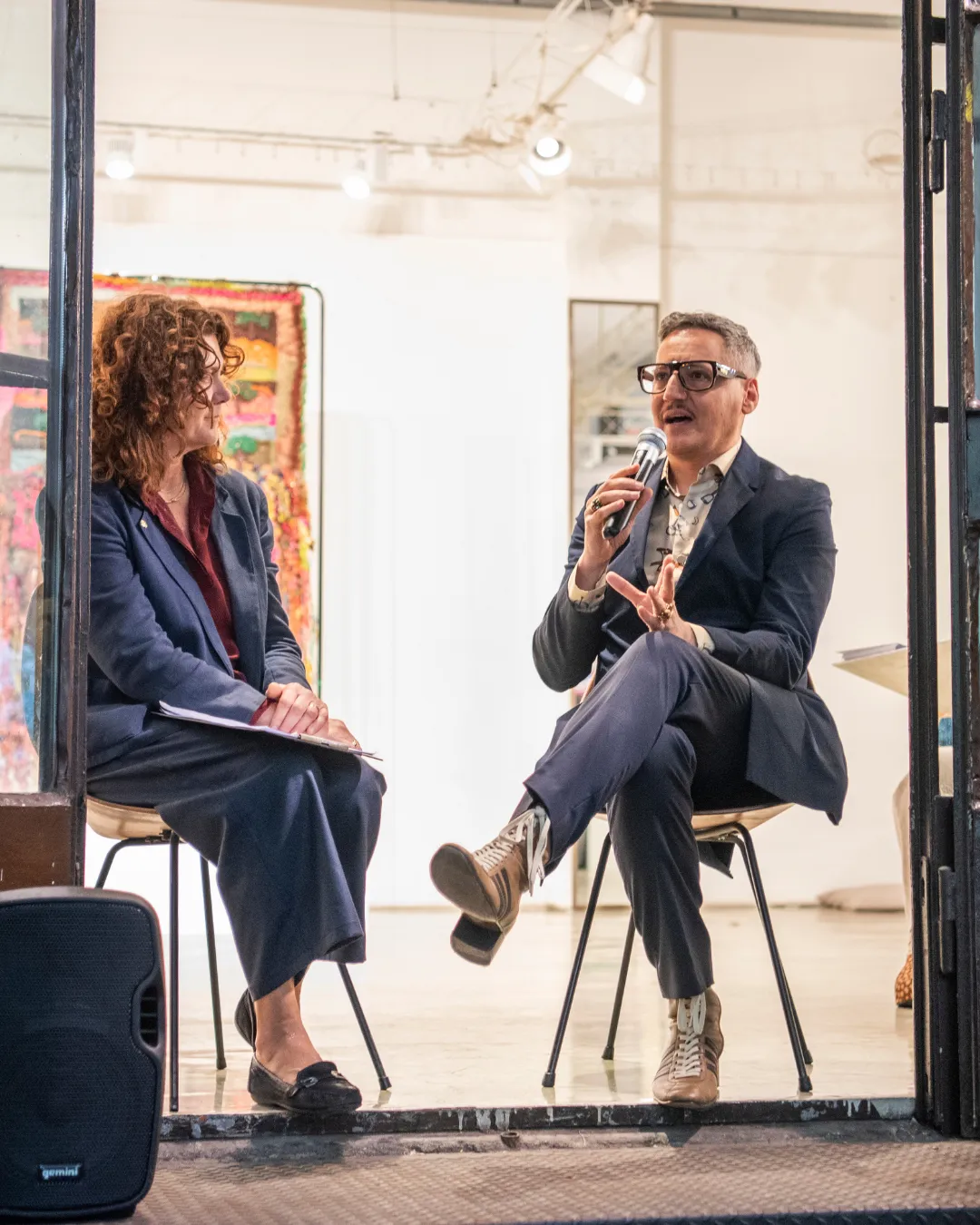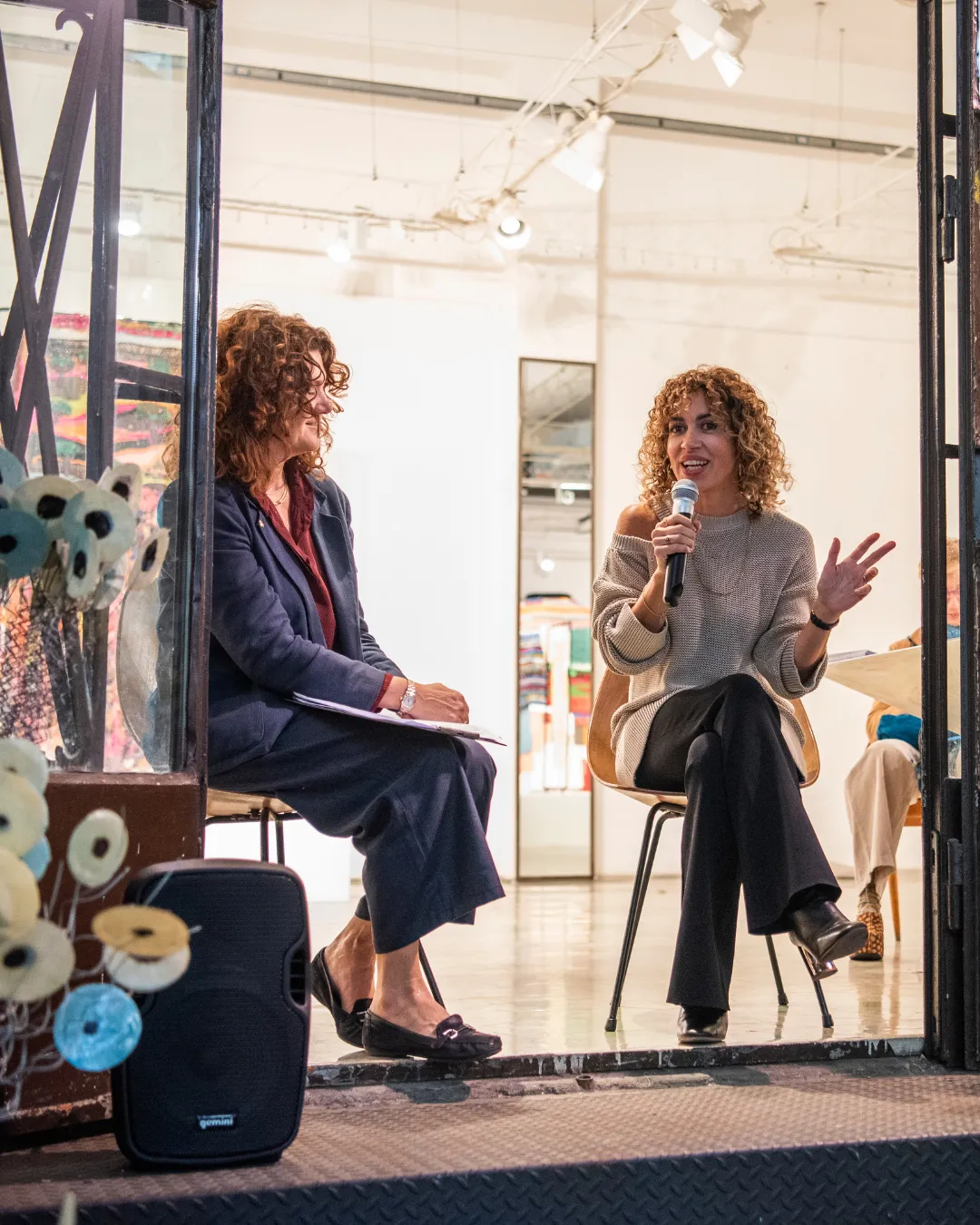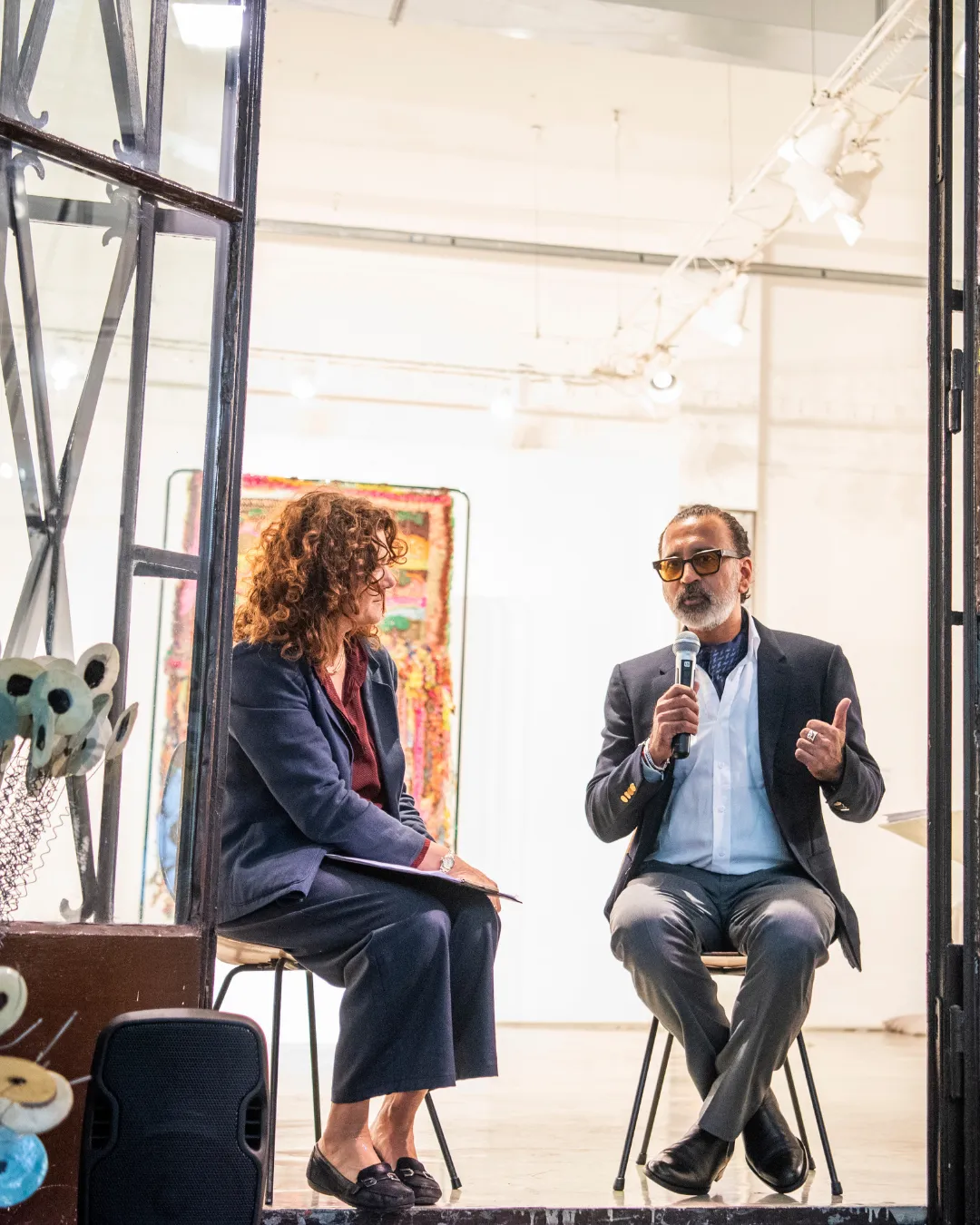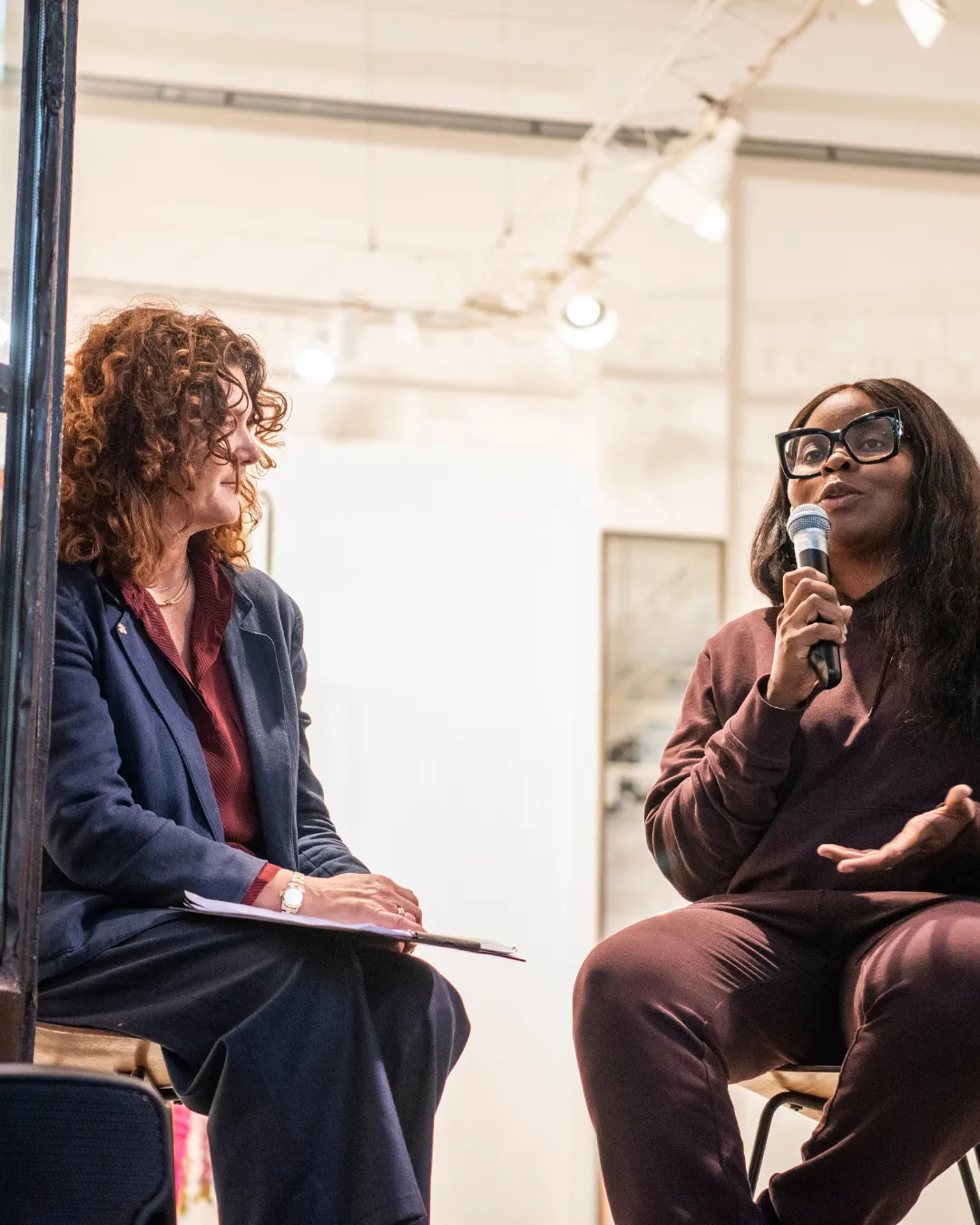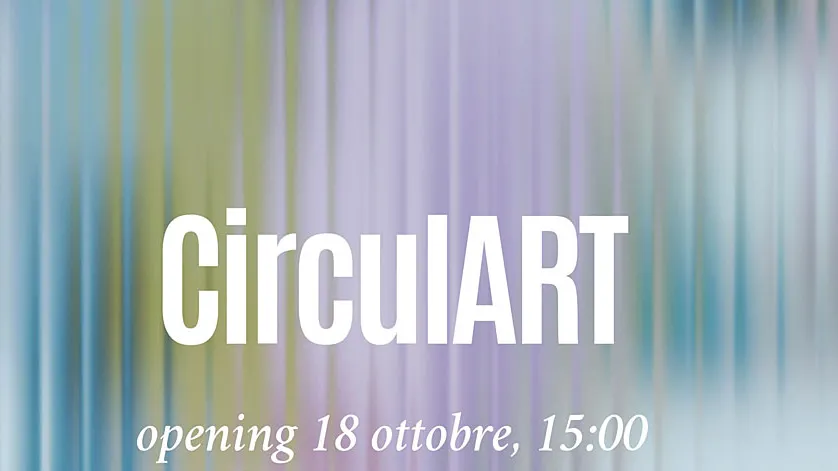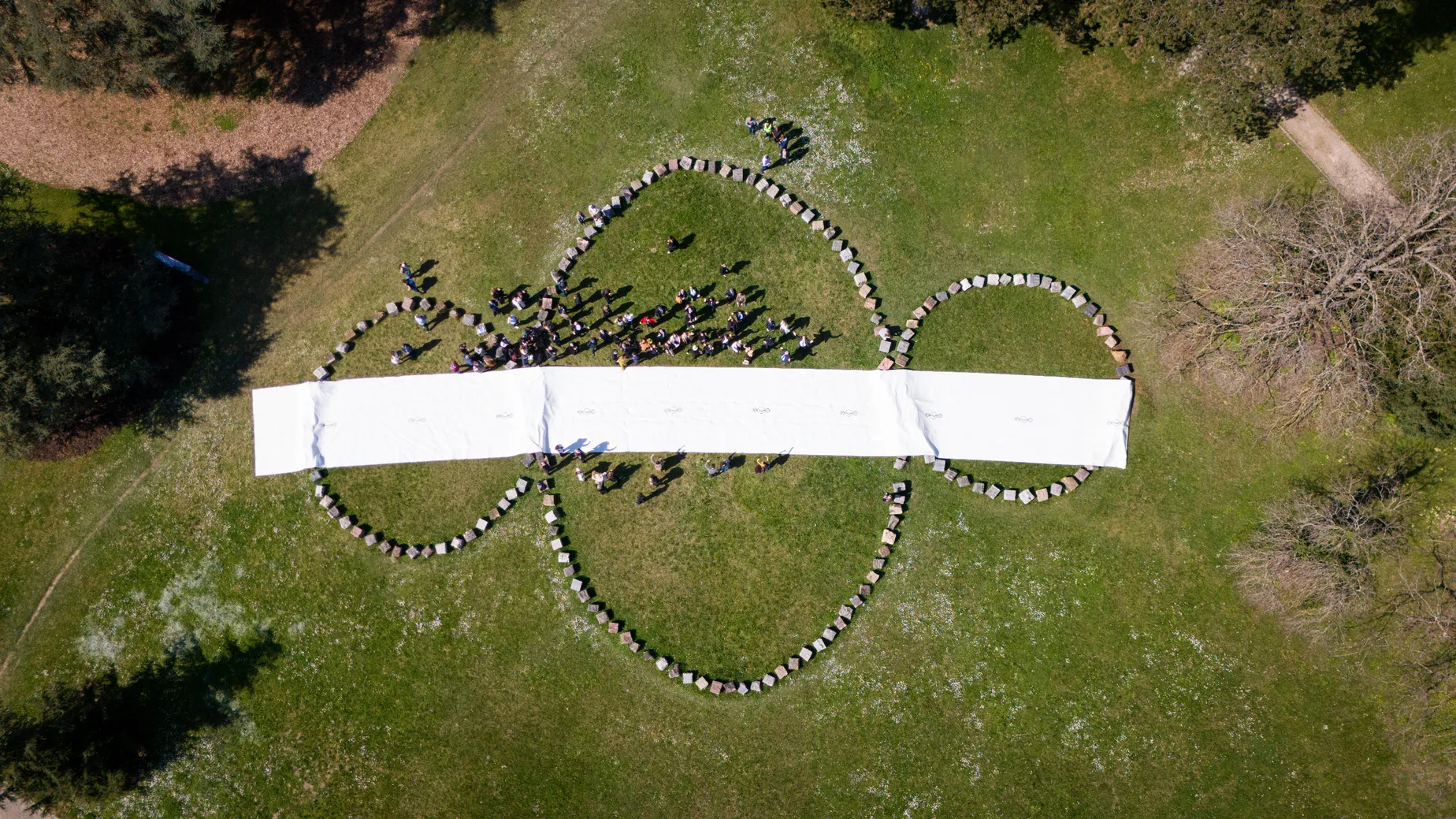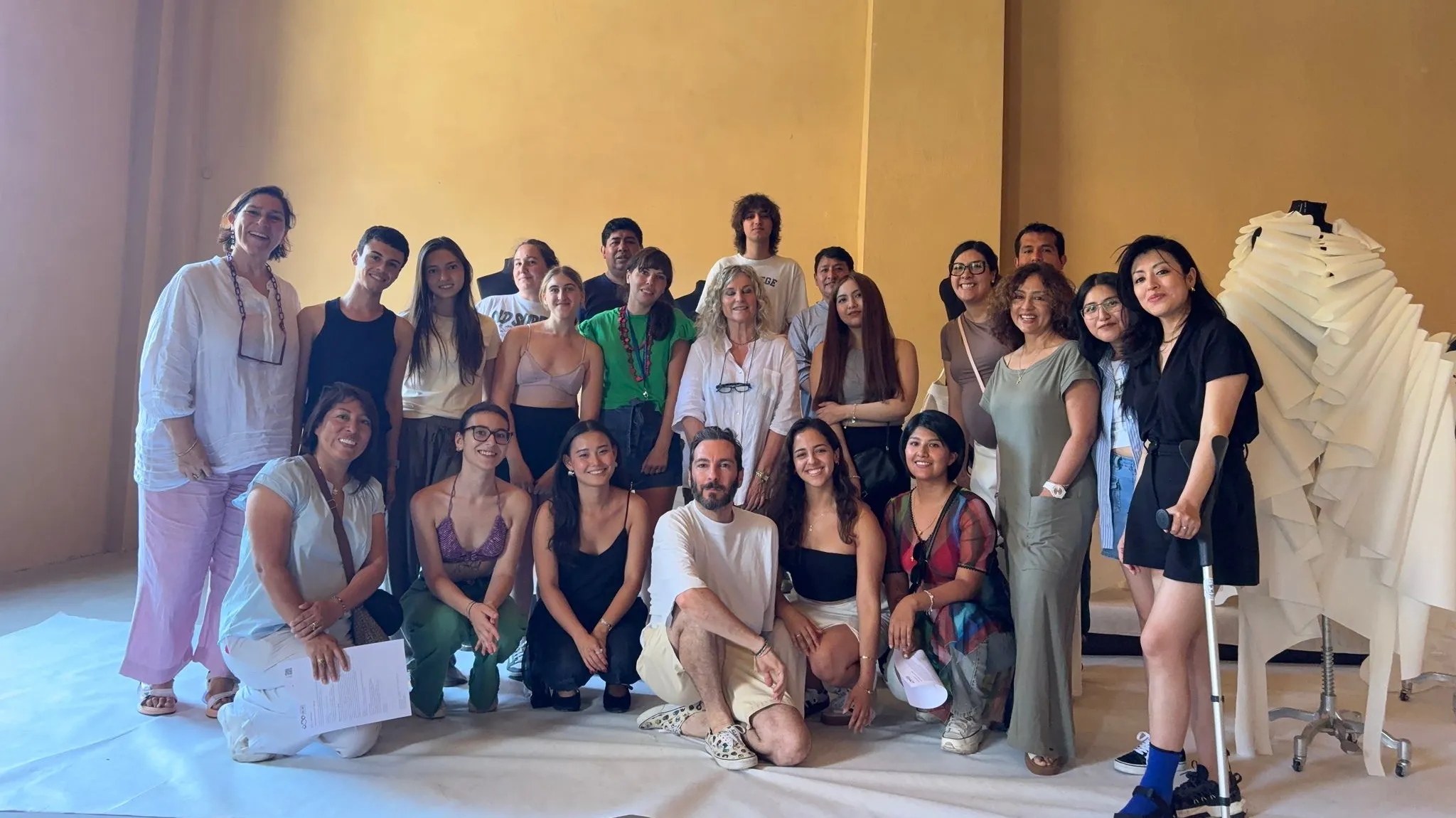What can we
help you find?
Ricerche suggerite
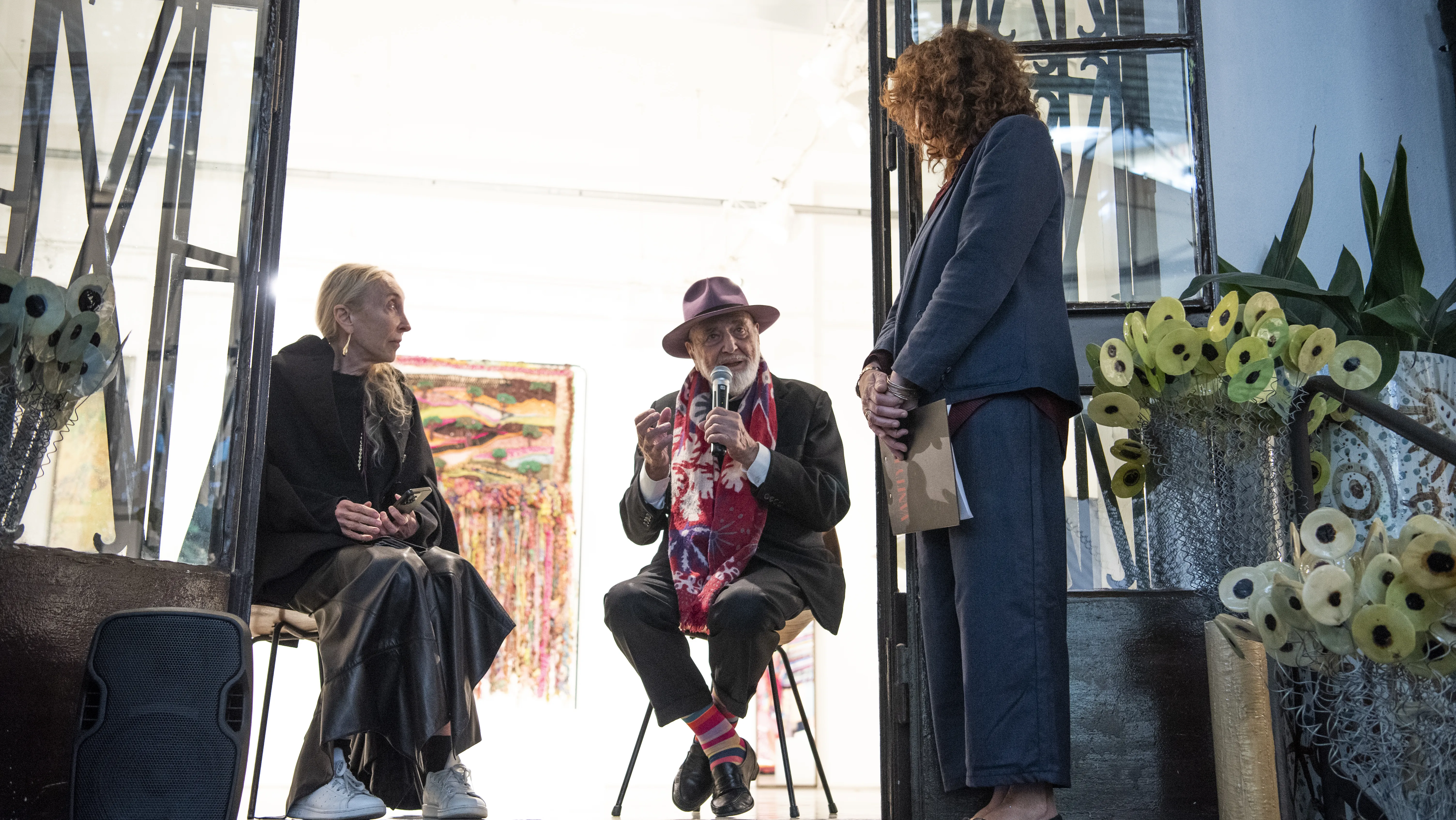
Circularity, traceability, transparency, and accountability: "CirculART 4.0" opens at the Sozzani Foundation.
On October 18th, Cittadellarte launched the exhibition, which aims to be an experimental laboratory where art, fashion, and industry meet to explore the pillars of the new textile economy. For the occasion, the objectives and content were presented through a mosaic of presentations featuring Michelangelo Pistoletto, Paolo Naldini, Carla Sozzani, and Olga Pirazzi, as well as the advisory board and project partners.
Redefining the relationship between creativity, innovation, and sustainability in contemporary fashion: this is one of the key objectives of CirculART, a Cittadellarte project now in its fourth edition and developed in collaboration with the Kering Group's Material Innovation Lab (MIL). The initiative, inaugurated last Saturday at the Sozzani Foundation, presents original works by six young international talents—three artists and three fashion designers—born from a co-creation process with some of Italy's most innovative textile companies; a unique experience that combines aesthetics and responsibility, vision and concreteness. The six selected creatives (Camilla Alberti, Giulia Filippi, and Mako Ishizuka), together with fashion designers (Made for a Woman, Piero D’Angelo, and Martina Boero of Cavia) and partner companies, have created unique works that tell a story of collaboration, innovation, and circularity, exploring new expressive and productive possibilities while respecting the environment.
Origins
CirculART was born with the shared goal of promoting a new way of thinking about creativity, fashion, art, and sustainability, focusing on circularity, collaboration, and social impact. It is the fruit of a collaborative effort. Its legacy is that of Fashion B.E.S.T. (Better Ethical Sustainable Think-Tank), the sustainable fashion laboratory founded in 2009 by Michelangelo Pistoletto and Franca Sozzani, and developed in synergy with the UNIDEE residency programs and the curatorial team of the Pistoletto Cittadellarte Foundation. Since 2019, CirculART has built a bridge between contemporary art and sustainability, demonstrating that fashion can be a vehicle for cultural as well as economic change. Furthermore, drawing inspiration from the Third Paradise, CirculART promotes a collective reflection on the need for a new balance between nature and artifice, actively contributing to the achievement of the Sustainable Development Goals of the 2030 Agenda.
The new edition
One of the new features of this edition is the introduction of the Digital Product Passport (DPP), developed in collaboration with Temera (Beontag Group), the exclusive technology partner. The DPP accompanies each artwork with a true "digital passport" that documents the entire production chain (from raw materials to possible reuse or recycling), making the history of each creation transparent, traceable, and accessible. This innovation is destined to transform the dynamics of fashion and sustainability: not only does it guarantee authenticity and compliance with new European regulations, but it also introduces a new standard of trust between brands, creatives, and consumers. Thanks to the DPP, each garment or artwork becomes a living narrative of sustainability, craftsmanship, and innovation, also offering interactive digital experiences that redefine the way people experience and perceive fashion. It is a pioneering tool that makes circularity concrete and measurable, marking a decisive step toward a future where beauty combines with responsibility.
The Works
Let's now discover the works on display, beginning with Hopeful Monsters. Serendipity in Saltational Evolution by Camilla Alberti. This work explores the transformation of matter through recycled materials and organic pigments. Sculpture and jacquard fabrics are created from fibers, powders, and colors obtained from industrial and natural waste. Imperfection and decay become creative resources, representing a space for coexistence between different species and times, where matter regenerates and takes on a new aesthetic and symbolic meaning.
We then move on to Martina Boero and her brand Cavia, who created The White Inside, a monumental sweater made from scraps, yarns, and end-of-line fabrics. Its heavy, patchwork exterior reflects the weight of fashion and excess, while a hidden void within invites visitors to enter a silent, white space. The work contrasts weight and hope, demonstrating how a delicate possibility of renewal can emerge from rejection and constraints, presenting itself as a fairytale refuge where heaviness gives way to lightness.
The third project is by Piero D’Angelo, who explores dyeing with slime mold, an organism capable of continuously generating pigments, similar to sourdough. The work Pigmenti Viventi (Living Pigments) is a dress/sculpture—made with natural and regenerative fibers such as wool and linen—that recalls the organic patterns of the growing slime mold. Additionally, a pair of jeans dyed with slime mold was created, demonstrating that this approach is not simply an artistic experiment but can become a language applicable to everyday fashion.
The fourth work is by Giulia Filippi: a blanket of snow that collects and tells a story of footprints, traces, and encounters. Made with a layering of natural textile fibers, it presents itself as a transportable garden that expresses its vegetal expression through the seeds that will potentially germinate on the bed of wool.
Manto, giardino trasportabile #2 is a web of possible stories that are composed, each differently, by the viewer. It is an exponential play of imagination between past, present, and future. The penultimate work is inspired by Kintsugi, the art of repairing broken ceramics: the reference is to Mako Ishizuka's project Threads of Virtue. Infusing with an Alternative Life Philosophy, which explores the concept and gestures of repair and connection to reflect on circularity. Bringing these themes into dialogue with the gestures of everyday life and the wisdom of traditional arts, the work was developed through exchanges and conversations with Italian partners and Japanese artisans involved in the work of recovery and recomposition. The trail's traces merge into an installation composed of textile elements, video projections, and a vocal performance.
The exhibition concludes with La Donna Baobab, a work presented by Made for A Woman: more than a tapestry, "it is a woven landscape," as the presentation states, "a story to be touched, a tribute to resilience." Handcrafted by the atelier's artisans, it transforms raffia and recycled yarns into a celebration of the land and people of Madagascar, a bold weave of earth, body, and future.
A team effort
CirculART benefits from the scientific and technical support of the Ellen MacArthur Foundation, a global leader in research and promotion of the circular economy, which has offered training and workshops to both the artists and the companies involved. Furthermore, 16 leading manufacturing companies were involved in CirculART 4.0, championing a virtuous model of innovation in Italian textile manufacturing: Albini Group, Brunello Erica Industria Tessile, Filatura Astro, Lanecardate, Lenzing Group, Maglificio Maggia, Madiva, Maeba International SB, Officina39, Piacenza Group, Pulvera, Successori Reda S.B.p.A., Tessuti di Sondrio, and Zegna Baruffa Lane Borgosesia. The project also relies on the collaboration of a scientific partner: Acqua Foundation, a non-profit organization dedicated to the protection and valorization of water through three fundamental pillars: Art, Advocacy, and Aid. This edition of CirculART even has an Advisory Board that supported the selection of artists and fashion designers and guided the strategic decisions for the project's international development: Christian Tubito, Director of Kering's Material Innovation Lab; Maria Fernanda Hernandez, Global Sustainability Expert and Sustainability Director at Temera; Matteo Magnani, Senior Policy Analyst at the Ellen MacArthur Foundation; Cecilie Thorsmark, CEO of Copenhagen Fashion Week; Sara Sozzani Maino, Creative Director of the Sozzani Foundation; Michelle Francine Ngonmo, Founder and CEO of the Afro Fashion Association and the Black Carpet Awards; Jalaj Hora, Founder and CEO of Synthegrate, former Global Vice President of Product Innovation and Consumer Creation at Nike; Gabi Scardi, Art Historian and Curator, Director of the Public Art Program at the Pistoletto Foundation's Accademia Unidee.
The Inauguration - Art and Fashion, a Pairing for New Frontiers
As anticipated, the exhibition inauguration took place on October 18th, kicking off with an introduction by Olga Pirazzi, head of Fashion B.E.S.T.: "CirculART was born from the encounter," she began, "of different worlds—artists, designers, industries, and textile supply chains—who, with different roles but a shared vision, have contributed to rethinking more responsible production and cultural models and solutions. CirculART has grown and enriched itself, both culturally and technically: in this edition, we introduced the development of DDP, a process that involved all of us in an intense and shared effort on transparency and traceability of the supply chain, even with respect to a work that, perhaps, represents an entirely new development." This was followed by presentations by some of the project's protagonists, moderated by Vanity Fair journalist Valeria Vantaggi.
The Dialogue Between Pistoletto and Sozzani
2009 marked the birth of Fashion B.E.S.T., a project founded by Michelangelo Pistoletto and Franca Sozzani at Cittadellarte: a unique laboratory dedicated to the development of sustainability in fashion, transforming raw materials, inspiring ethical design, and redefining production and communication in the fashion industry. This genesis was the basis for the discussion between Carla Sozzani (sister of Franca, who passed away in 2016) and the founder of Cittadellarte. "B.E.S.T. was launched," Carla explained, "to help young people, making them understand the importance not only of sustainability, but above all of responsibility. Today, with the Sozzani Foundation, we are carrying forward the thinking of my sister and Michelangelo." The latter instead retraced the birth of Cittadellarte, "opened in the early 1990s in Biella to connect art with all sectors of social life, not just visual art. For me, the artist had to become responsible for the interconnection of the creative phenomenon." Pistoletto then addressed the topic of the new generations: "We try to give young people the opportunity to develop their skills: we must work with industrial and manufacturing activities. A new moral and cultural investment is needed: aesthetics are not enough, ethics are also needed."
Paolo Naldini on Circle and Circularity
The director of Cittadellarte focused first on the event's name and its meaning: "CirculART refers to both circularity and art. We're used to talking about the circular economy, circular fashion, but something about circular art is missing. What does it mean, and how can we talk about circular art? First of all, thanks to this exhibition." Naldini then moves on to the trinamic sign, "represented by three circles, composed of the infinity symbol with two circles touching at a point, representing two opposites; that point becomes, in the symbol, a circle itself, broad, large, spacious, welcoming, capable of accommodating us in a space where we bring together what is present, what presses, from the two lateral circles. This idea is indeed fascinating because when two different situations meet, and it happens all the time in nature, in our lives, the easiest thing to do, unfortunately, is war, and for one of the two to want to prevail over the other and eliminate and erase the other." The director here touches on the theme of preventive peace: "To avoid war and instead make peace, you need to 'have' art, intelligence, talent, and brilliance. This is a message we'd like to bring, with the exhibition, to the world of fashion: this supply chain is like a necklace of circles placed next to each other. So this idea of circularity as a circle that welcomes and generates is incredibly powerful for us. But circularity also aims to convey the idea that art doesn't make itself, but above all, it doesn't make itself alone." And here's the gaze to the horizon: "The idea of the group that I call a circle, to remain within the metaphor of circularity, is society. Fertilizing the circles with the ezyme, the ferment, the creative imagination of artists and designers is, in a way, our mission."
Testimonials
The talk concluded with a mosaic of contributions from partners and members of the CirculART Advisory Board: Christian Tubito, Kering Material Innovation Lab, explained how his organization supports young designers and artists ("Every work is born from a creative idea"); Michelle Francine Ngonmo, Afro Fashion Association, highlighted her work promoting professional inclusion with an innovative database ("Inclusion also means creating access"); TemeraMaria Fernanda Hernandez, CirculART Advisory Board, highlighted the value of consumer information in the fashion industry ("Traceability is the key to enabling circularity"); Jalaj Hora, CirculART Advisory Board, explained how artificial intelligence can be used to improve production processes ("A marketplace must be built around creativity, making virtuous use of technology"); Gabriele Bonfiglioli, Acqua Foundation, explained how his organization places water at the center of the debate in a project that actively involves international and national artists ("Science is done with numbers, but to speak to people's hearts, art is needed").
At the end of the meeting, Olga Pirazzi dedicated a thought to all the project's protagonists: "We would like to thank the Main Partner, the Kering Group's Material Innovation Lab, for their support and shared vision. A heartfelt thanks also goes to the exclusive Partner for traceability and technological innovation, Temera, for their decisive contribution to the project. A special thanks also goes to the partner companies that made CirculART possible: Albini Group, Brunello, Erica Indus
